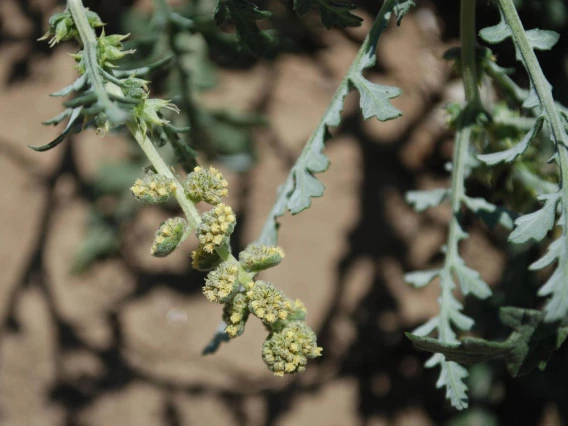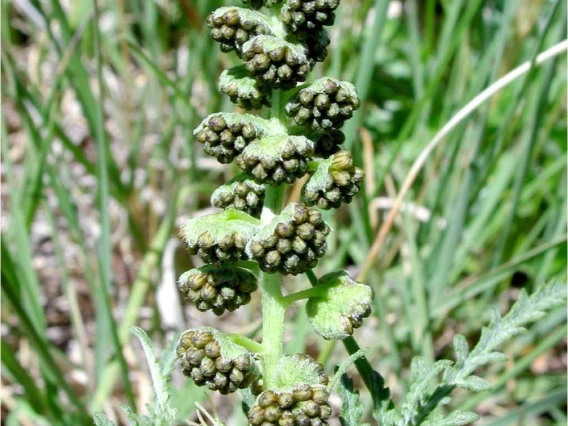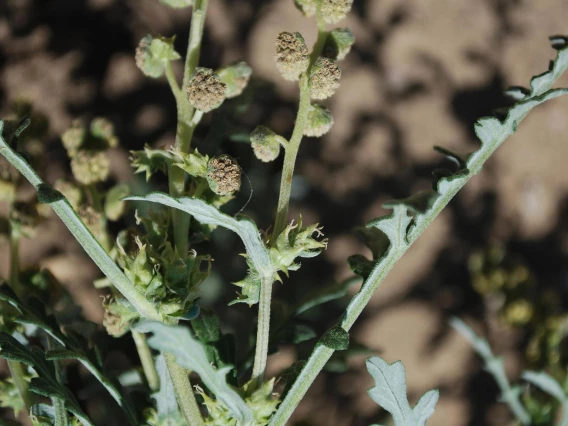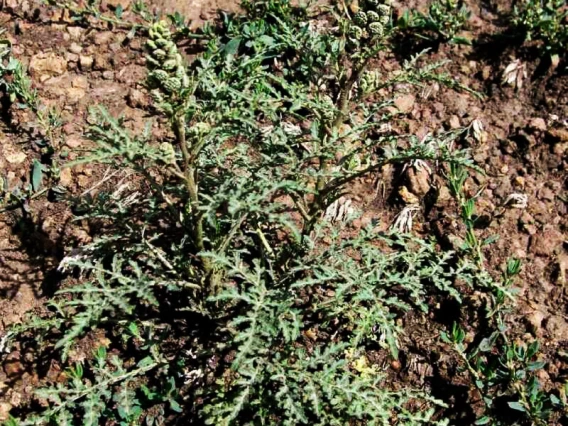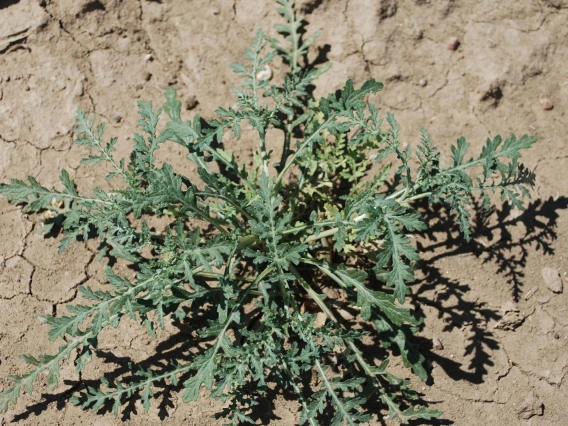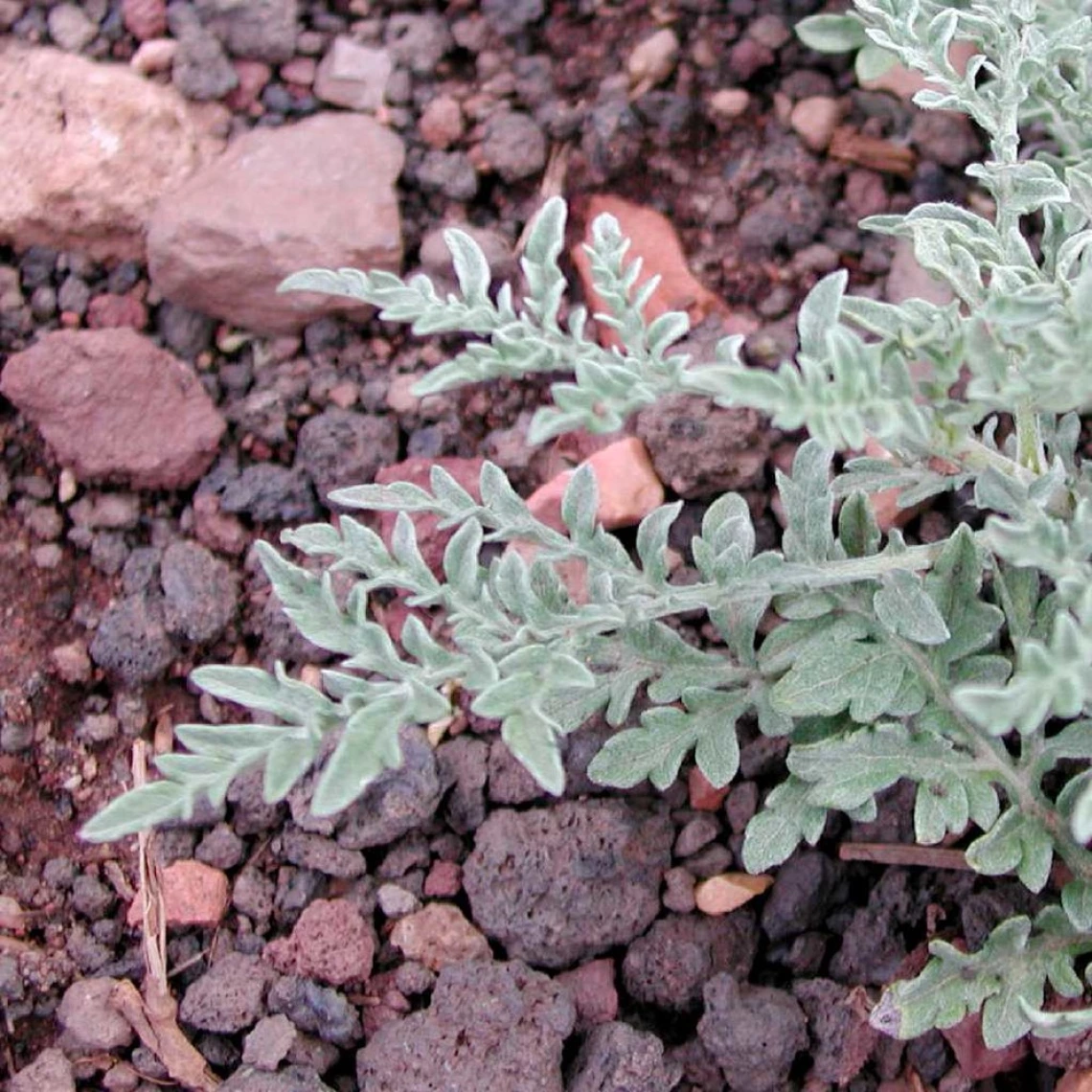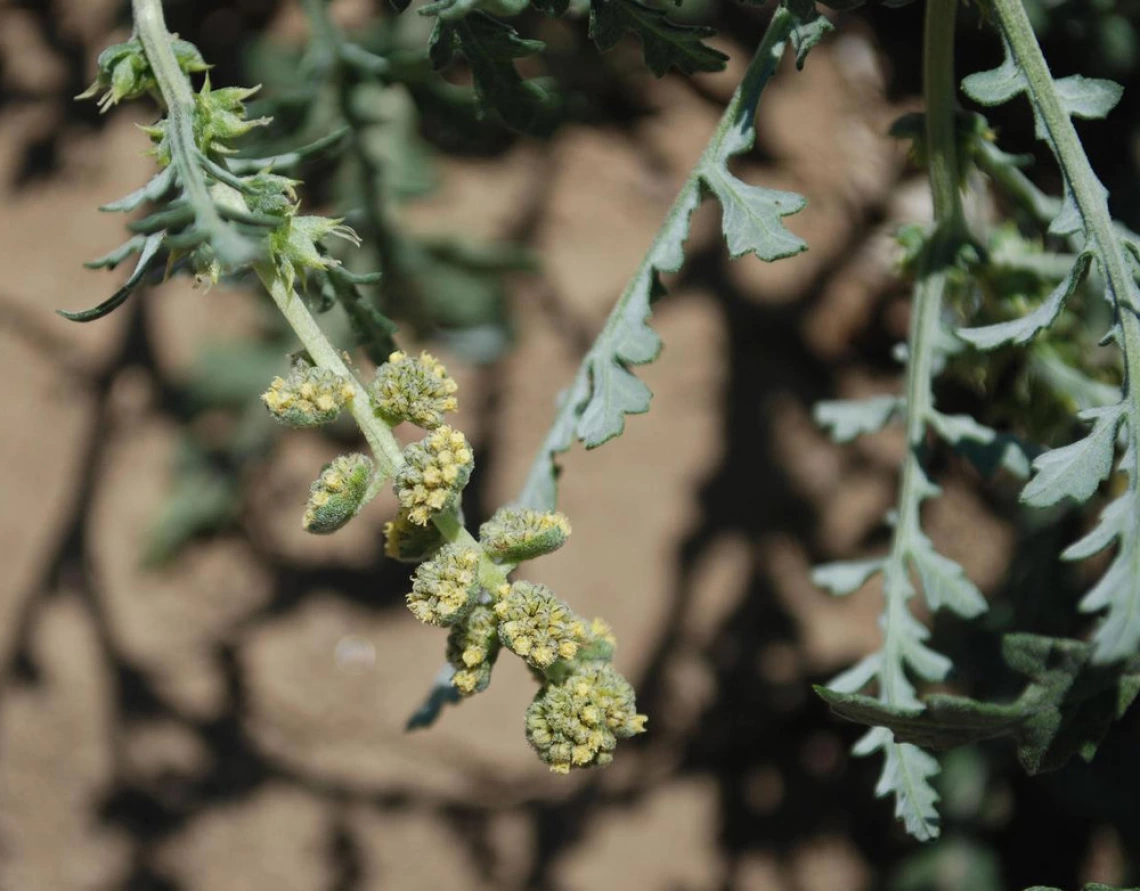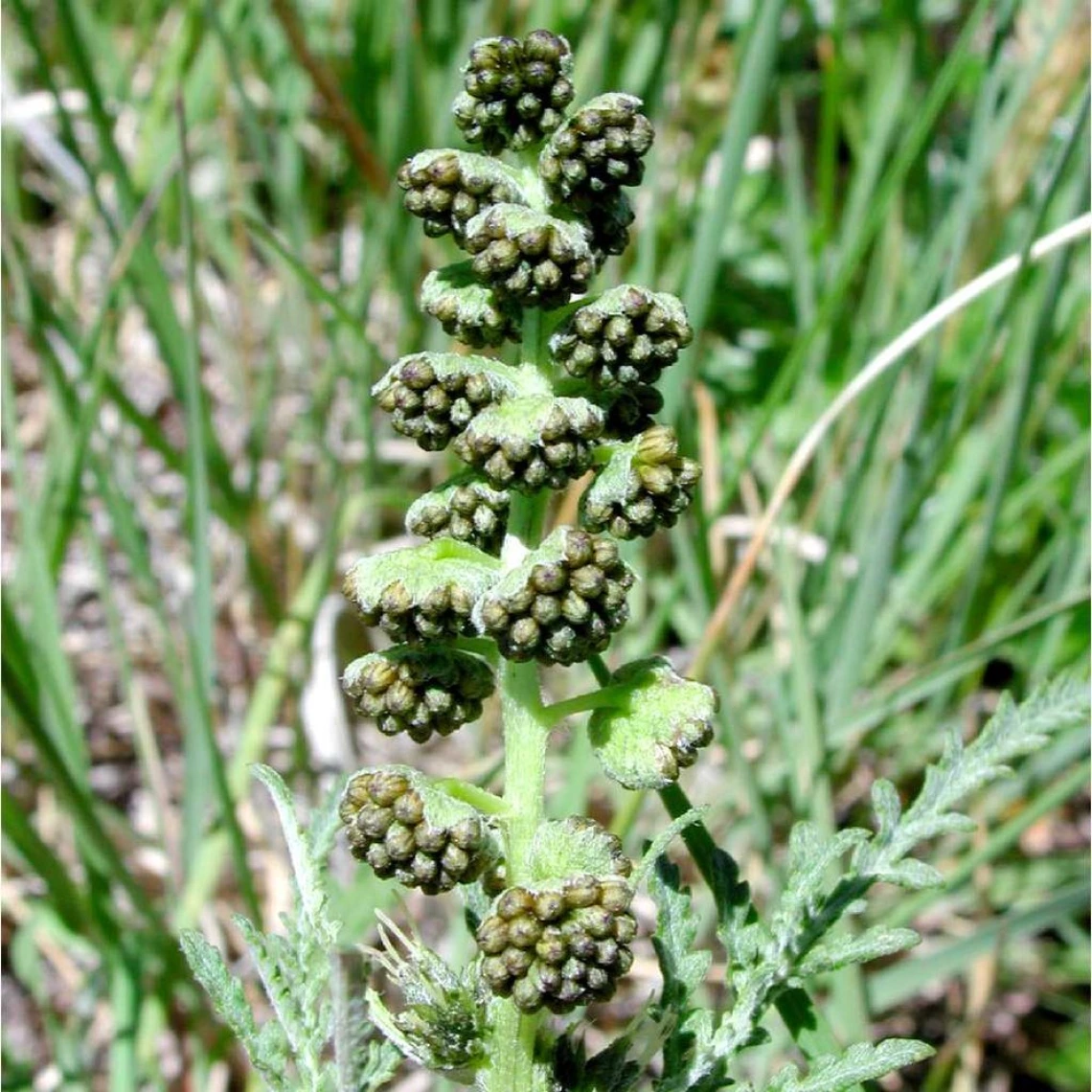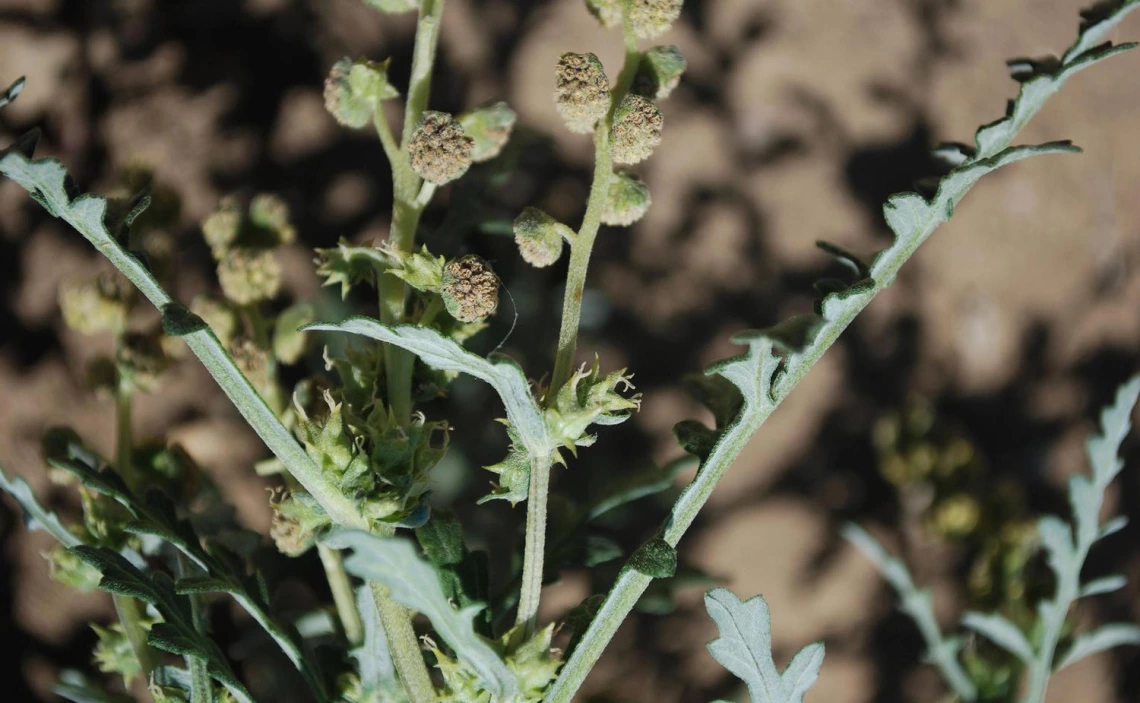Image
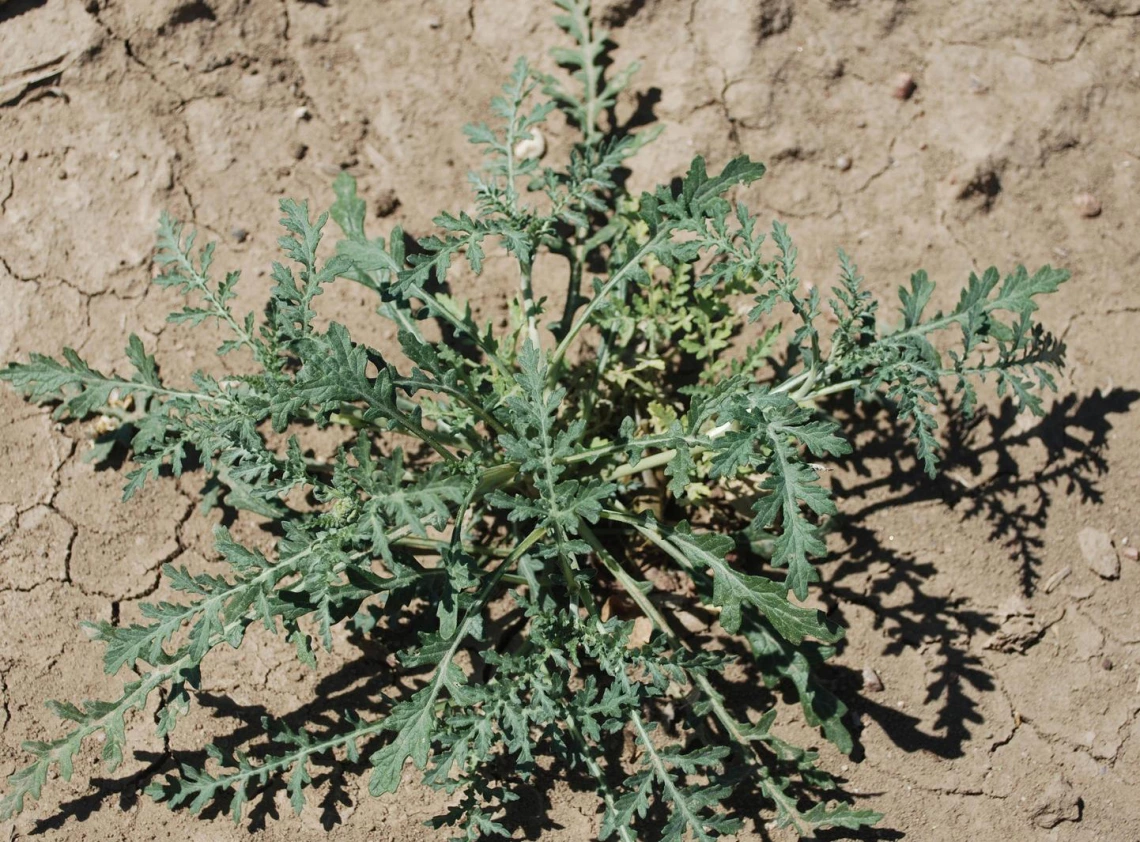
Skeletonleaf bursage
Howard F. Schwartz, Colorado State University, Bugwood.org
Common Name(s)
Skeletonleaf bursage
Bursage
Scientific Name
Ambrosia tomentosa
Family
Sunflower or Aster family (Asteraceae)
Reasons for concern
Aggressively forms large populations by spreading roots and seeds, and can be difficult to control.
Special note
Native plants have evolved together over centuries with pollinators, birds, wildlife and other native plants. We may not understand the role this native plant plays in our environment, so we may not want to completely eliminate it.
Classification
Native
Botanical description
Erect, branching herbaceous plant.
Leaves
Mostly alternate, 2 to 5 inches long. Finely divided and deeply lobed with coarsely toothed margins. Lobes are reduced in size from leaf base to tip. Dark green upper leaf surface. Silvery-green lower leaf surface with fine, short, dense hairs.
Stem(s)
Erect, 4” to 18” tall. Branched and spreading. Pale brown.
Flowers
Yellow. Very small and inconspicuous. Blossom June through September. Male flowers at top of stem, inflorescence resembles a spike. Spiny female flowers found below spike in leaf axils. Pollen drops from male flowers onto female flowers below producing seeds.
Seeds
Late June to August. Small, dry, hard.
Roots
Extensive, horizontal, deep, creeping roots.
Native to
Great Plains of U.S.
Where it grows
In disturbed habitats, in cultivated fields and pastures, prairies, streams, roadsides, waste areas, dry or poorly drained sites, at elevations of 4,200 to 7,000 feet.
Lifecycle
Long-lived perennial
Reproduction
By seed and creeping roots
Weedy Characteristics
Large root systems make this plant difficult to control.
Control Strategies
Remove plants manually, making sure to get roots; till or hoe before plants flower. Disturb soil as little as possible. Step down disturbed soil. Plant desirable species to outcompete invasives. Frequently monitor previous infestations for new growth.
References
- Skeletonleaf bursage Washington State Noxious Weed Control Board
- Skeletonleaf bursage Invasive Plant Atlas of the United States, National Park Service and University of Georgia Center for Invasive Species and Ecosystem Health


